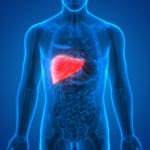Rare Case of Elderly Patient Links Porphyria, Bone Marrow Cancer

The growing incidence of certain types of cancer among the elderly may indicate that an association between acquired erythropoietic uroporphyria (AEU) — a late-onset form of congenital erythropoietic porphyria (CEP) — and bone marrow malignancies may be more common than previously thought.
The case of an 80-year-old man who developed AEU in association with a bone marrow cancer, described in a recent report, supports such a link.
The study, “Acquired erythropoietic uroporphyria secondary to myeloid malignancy: A case report and literature review,” was published in the journal Photodermatology, Photoimmunology & Photomedicine.
Also known as Günther disease, CEP is the rarest type of a group of genetic disorders known as porphyria. It is caused by mutations in the UROS, GATA1, or ALAS2 genes, which encode enzymes needed for the production of heme, a molecule that helps transport oxygen throughout the bloodstream.
CEP-related mutations lead to the toxic buildup of heme precursors, called type I porphyrins, resulting in light-sensitive skin blistering, alterations in skin pigmentation, red blood cells breakdown — called hemolytic anemia — and an enlarged spleen.
AEU, a rare late-onset form of CEP, has been reported and can manifest similarly to porphyria cutanea tarda or PCT, the most common form of porphyria. Most AEU cases are associated with myeloid malignancies, which are a type of cancer affecting blood cell precursors in the bone marrow, but patients do not carry CEP-associated mutations.
“Here we report on a patient with AEU associated with myeloid malignancy (AEU-MM),” the researchers wrote in describing the older man, who had fragile skin and blistering on both hands upon examination.
The researchers, from the University of Barcelona, in Spain, reported that the patient had primary myelofibrosis, a rare type of blood cancer in which the bone marrow is replaced by fibrous scar tissue and loses part of its ability to give rise to new blood cells.
Tissue analysis under the microscope showed unusual thickening at the junction between the upper and lower skin layers, with no signs of inflammation.
Blood tests revealed the patient had mild anemia, with slightly lower levels of hemoglobin — the heme-associated protein that carries oxygen in red blood cells — and low platelet counts. Liver function tests were normal, and there was no evidence of infections.
The total porphyrin levels in the man’s urine were markedly elevated. A detailed analysis then found increased levels of type I porphyrins, which are typically associated with CEP. While porphyrin levels in the red blood cells were not increased, there was an abnormal distribution of different forms of type I porphyrins, including uroporphyrin I.
“The presence of uroporphyrins within red blood cells demonstrates the hematologic [blood-based] origin of the disorder,” the researchers wrote.
Genetic tests found no mutations in the UROS, GATA1, and ALAS2 genes from DNA isolated from blood immune cells. Based on these findings, the patient was diagnosed with AEU associated with primary myelofibrosis.
He was treated with blood transfusions, weekly erythropoietin — a hormone that stimulates red blood cell production — the anti-inflammatory steroid prednisone, and twice-weekly chloroquine.
Type I porphyrins remained elevated despite treatment. Yet, at the last follow-up visit, the patient showed reduced skin blistering.
A literature search revealed an additional 13 cases of AEU-MM, all occurring in males over the age of 50, and characterized by fragile skin, blistering, altered skin pigmentation in sun-exposed areas, and low platelet counts.
Among these patients, 36% were initially misdiagnosed with PCT, which “shows the importance of performing specific blood and urinary porphyrin quantification,” the scientists wrote.
Treatment approaches and outcomes were highly variable. In one case, complete remission was achieved after a bone marrow transplant.
“Given the increasing incidence and prevalence of [myeloid malignancies] in an aging worldwide population, AEU-MM may be an under-recognized/misrecognized entity,” the investigators wrote. “It is important to note that the diagnosis of AEU might be key to recognizing an underlying myeloid malignancy and, therefore, should always be followed by pertinent tests.”







